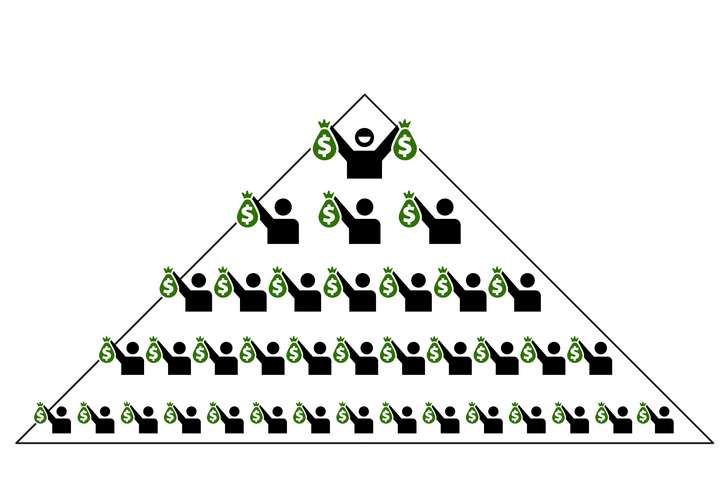Latest Updates
Wisconsin’s FY 2025-27 budget was signed into law with partial vetoes. The tax policy changes described here were included unamended in the new law.
See Full Timeline
With reports that Republican legislative leaders and Wisconsin Gov. Tony Evers (D) have reached a budget deal for the 2025-27 biennium (fiscal years 2026 and 2027), it is worth examining two significant taxA tax is a mandatory payment or charge collected by local, state, and national governments from individuals or businesses to cover the costs of general government services, goods, and activities.
relief proposals Republicans included in their plan.
The more costly of the two provisions, reducing individual income taxAn individual income tax (or personal income tax) is levied on the wages, salaries, investments, or other forms of income an individual or household earns. The U.S. imposes a progressive income tax where rates increase with income. The Federal Income Tax was established in 1913 with the ratification of the 16th Amendment. Though barely 100 years old, individual income taxes are the largest source of tax revenue in the U.S.
collections by an estimated $695 million over two years, is a significant increase in the amount of retirement income that is excluded from income taxes for Wisconsin seniors. The next most expensive provision, reducing collections by an estimated $643 million over the biennium, would expand the amount of income that falls within Wisconsin’s second-lowest bracket.
If the goal of the bracket threshold change is to provide tax relief to lower- and middle-income Wisconsinites, expanding the amount of income that is exposed to the lower 4.4 percent rate, rather than the 5.3 percent rate, is a relatively well-structured way to accomplish that goal. However, the expanded retirement income exclusion, as currently proposed, would undermine the tax code’s neutrality and shift burdens onto working families over time, while yielding far less “bang for the buck” than other more pro-growth reforms.
Retirement Income Exclusion
Republicans’ current tax relief proposal would substantially expand Wisconsin’s retirement income exclusion by increasing the maximum exclusion amount from $5,000 to $24,000 for single filers and from $10,000 to $48,000 for married couples filing jointly. While eligibility would be limited to those who are at least 67 years of age, up from 65 years of age, the exclusion would no longer be income-tested.
While well-intentioned as a way to provide tax relief to retirees facing financial strain and to help Wisconsinites stay in Wisconsin, the proposal as currently drafted would go far beyond that by wiping out income tax liability altogether for many retirees and by substantially reducing income tax liability for even the affluent.
Imagine a married couple with $60,000 in non-Social Security retirement income. Under current law, this couple would be ineligible to claim Wisconsin’s income-tested retirement income exclusion of $10,000 because their federal adjusted gross incomeFor individuals, gross income is the total pre-tax earnings from wages, tips, investments, interest, and other forms of income and is also referred to as “gross pay.” For businesses, gross income is total revenue minus cost of goods sold and is also known as “gross profit” or “gross margin.”
(AGI) exceeds $30,000. If they claimed Wisconsin’s standard deductionThe standard deduction reduces a taxpayer’s taxable income by a set amount determined by the government. It was nearly doubled for all classes of filers by the 2017 Tax Cuts and Jobs Act (TCJA) as an incentive for taxpayers not to itemize deductions when filing their federal income taxes.
($18,823 in tax year 2025 for a couple with $60,000 in Wisconsin income) and personal exemptions ($1,900 for a married couple with both individuals ages 65 or over), their Wisconsin taxable incomeTaxable income is the amount of income subject to tax, after deductions and exemptions. For both individuals and corporations, taxable income differs from—and is less than—gross income.
would be $39,277, and their total income tax liability would be approximately $1,553 under Wisconsin’s current rate schedule.
Under the proposal, if this couple takes at least $48,000 in distributions from qualifying retirement accounts, this would reduce their Wisconsin income to only $12,000. After claiming the standard deduction, they would have $0 in taxable income and would not be required to pay any income taxes to Wisconsin.
A separate retired couple with $100,000 in federal AGI would have only $52,000 in Wisconsin income once the $48,000 retirement income exclusion is claimed. Since Wisconsin’s sliding-scale standard deduction varies based on a taxpayer’s Wisconsin income after exclusions are applied, the retirement income exclusion would enable this couple to claim a higher standard deduction than they would have been able to claim otherwise. Specifically, they would be able to claim a $20,405 standard deduction and a $1,900 personal exemption, reducing their Wisconsin taxable income to $29,695. Under both Wisconsin’s current and proposed rate schedules, this would yield a tax liability of approximately $1,130.
Meanwhile, a working-age couple with $100,000 in federal AGI would be eligible to claim a standard deduction of only $10,911, reducing their taxable income to $87,689 once their $1,400 personal exemption is applied. Under Wisconsin’s current income tax rates, this would yield an income tax liability of approximately $4,119. Under the proposed new rate schedule with the expanded 4.4 percent bracket, this would yield a liability of approximately $3,866. As such, under either the current brackets or the proposed new schedule, the working-age taxpayers making $100,000 would pay roughly three-and-a-half times more than the retired taxpayers despite having the same amount of annual income.
Such a large retirement income exclusion would inject significant nonneutrality into Wisconsin’s tax code, extending preferential treatment to older Wisconsinites over working-age individuals and families. Such a sharp tax cut for retirees, including those with comfortable retirement savings and additional accrued wealth, would, over time, put upward pressure on the income tax rates that would apply to the narrower base of primarily working-age Wisconsinites. This could create an incentive for more seniors to move to Wisconsin from other states to take advantage of this preferential treatment, putting additional strain on state coffers, even as working-age Wisconsinites may become more likely to relocate to low- or no-income-tax states.
It is important to keep in mind, especially when thinking about income incurred in retirement, that annual income alone is not a sufficient proxy for wealth or ability to pay. Some retirees take relatively modest annual distributions from their retirement accounts while retaining other high-value assets, such as vacation properties or other non-retirement account investments. Furthermore, after saving and investing for decades, many older Americans are actually better able to afford state income tax payments than their working-age children, friends, and neighbors who haven’t yet accrued many assets and are still working to pay down student loans and mortgages.
Additionally, while reducing (and in some cases eliminating) income taxes on retirees would give them more capacity for additional consumption, which could have a positive effect on sales taxA sales tax is levied on retail sales of goods and services and, ideally, should apply to all final consumption with few exemptions. Many governments exempt goods like groceries; base broadening, such as including groceries, could keep rates lower. A sales tax should exempt business-to-business transactions which, when taxed, cause tax pyramiding.
revenues, a large retirement income exclusion would be far less likely to promote long-term economic growth in Wisconsin than income tax relief—especially income tax rate reductions—that reduce the burden on economic growth-inducing activities like labor and investment.
Instead of substantially expanding the retirement income exclusion, policymakers should instead reduce income tax rates or otherwise make the income tax code friendlier for all taxpayers, including retirees as well as members of Wisconsin’s current workforce. To the extent Wisconsin policymakers wish to further relieve tax burdens for fixed-income individuals who are truly struggling to make ends meet, policymakers could consider making additional age- and/or income-tested provisions more generous. A more reasonable, targeted solution would be to modestly increase the income threshold for the existing $5,000 per person retirement income exclusion, and perhaps index it to inflationInflation is when the general price of goods and services increases across the economy, reducing the purchasing power of a currency and the value of certain assets. The same paycheck covers less goods, services, and bills. It is sometimes referred to as a “hidden tax,” as it leaves taxpayers less well-off due to higher costs and “bracket creep,” while increasing the government’s spending power.
, to ensure more claimants actually benefit from it.
Expansion of Second-Lowest Individual Income Tax Bracket
In addition to substantially expanding the retirement income exclusion, Republicans’ tax plan as currently drafted would provide individual income tax relief to lower- and middle-income taxpayers by expanding Wisconsin’s second-lowest individual income tax bracket, retroactively effective as of tax year 2025. Specifically, the proposal would apply the 4.4 percent rate, rather than the 5.3 percent rate, to an additional $21,110 in taxable income for single filers and an additional $28,150 in taxable income for married couples filing jointly, as shown in the table below.
Wisconsin Budget Would Provide Income Tax Relief by Expanding Second-Lowest Bracket
Wisconsin’s Individual Income Tax Brackets, Current and Proposed
Source: Wisconsin Legislative Fiscal Bureau; Tax Foundation research.
This proposed change is a structurally sound way to provide individual income tax relief to lower- and middle-income taxpayers. Currently, Wisconsin’s second-highest individual income tax rate of 5.3 percent kicks in at only $29,370 in taxable income for single filers and $39,150 for married couples filing jointly. As such, a large number of lower-income Wisconsinites are currently exposed to Wisconsin’s second-highest rate. Specifically, Wisconsin imposes a higher marginal income tax rate on $30,000 in taxable income for single filers than is imposed in all but 10 states (Delaware, Hawaii, Kansas, Maine, Minnesota, Montana, New York, Oregon, South Carolina, Virginia) and the District of Columbia.
Other Wisconsin Tax Reform Options
As state policymakers work to finalize any tax plan that is included in the Wisconsin budget, expanding the amount of income that is taxed at the lower 4.4 percent rate, rather than the 5.3 percent rate, is a relatively well-structured form of long-term income tax relief. However, shifting income tax burdens away from retirees and onto working families is short-sighted, nonneutral, and could lead to undesirable unintended consequences in the long run.
Instead, policymakers could consider slightly modifying the existing $15,000/$30,000 income eligibility thresholds for the current $5,000 per person exclusion so more lower-income seniors benefit from the exclusion. Keeping the retirement income exclusion limited and targeted would free up more revenue that could be used for structurally sound, broadly applicable forms of income tax reform and relief. For example, policymakers could consider modifying the sliding-scale standard deduction, which currently phases down as income rises, to apply the deduction more neutrally, as is the practice in many other states. Various modifications to the standard deduction were recommended in our 2018 and 2022 Wisconsin tax reform guides. Another structurally sound option, which would help improve Wisconsin’s individual income tax component score on the State Tax Competitiveness Index, would be to index the personal exemption to inflation.
Stay informed.
Get the latest tax data, news and analysis.
Subscribe
Share this article



























